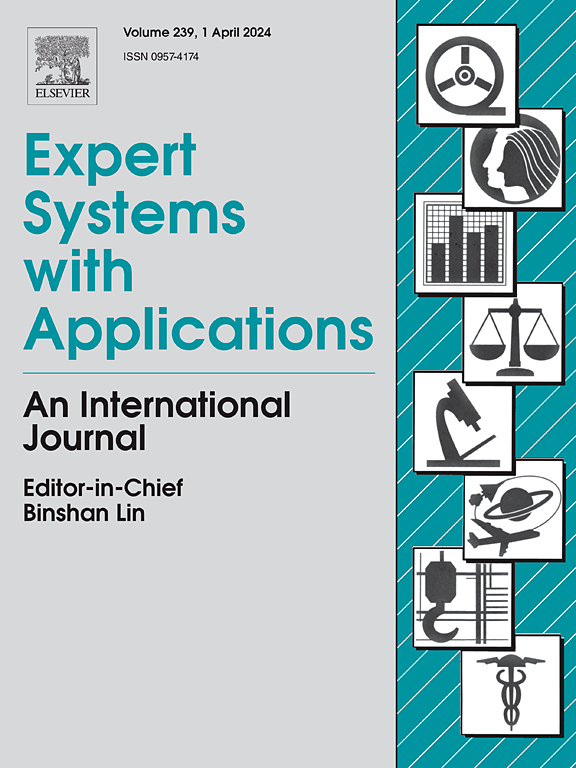FeatureX:用于深度学习的可解释特征选择
IF 7.5
1区 计算机科学
Q1 COMPUTER SCIENCE, ARTIFICIAL INTELLIGENCE
引用次数: 0
摘要
通过降低特征集的维数来理解特征的重要性,特征选择对深度学习模型的性能至关重要。现有的技术侧重于不同特征的统计特征,由于数学推理复杂,难以理解。此外,特征选择可能受到模型偏好的影响,导致缺乏可解释性。为此,本文提出了一种名为FeatureX的有效方法,通过定量评价获得最优特征子集,增强特征选择过程的可解释性。首先,FeatureX提出了重要性分析,通过利用特征扰动来量化每个特征对深度学习模型的贡献。其次,为了缓解多重共线性,FeatureX采用统计分析方法计算这些特征的相关系数,并根据相关系数的大小去除冗余特征。最后,使用特征贡献和相关系数,FeatureX自动筛选这些特征,以识别最相关和高贡献的特征。FeatureX基于已有研究和对数据的先验知识,对相关参数进行预设,并通过参数敏感性分析证明其有效性。FeatureX在17个公共数据集上使用5个基本深度学习模型进行评估。实验结果表明,FeatureX平均减少了47.83%的特征数量,提高了63.33%的深度学习模型的准确率。此外,与现有的特征选择技术相比,FeatureX的F-measure平均提高了1.61%,证明了其有效性。本文章由计算机程序翻译,如有差异,请以英文原文为准。
FeatureX: An explainable feature selection for deep learning
Feature selection is critical for the performance of deep learning models by reducing the dimensionality of feature sets to understand the features’ importance. Existing techniques focus on the statistical characteristics of different features, which makes them hard to understand due to complicated mathematical reasoning. Furthermore, feature selection can be impacted by model preferences, resulting in a lack of explainability. To this end, this paper proposes an effective method called FeatureX to obtain the optimal feature subset and enhance the explainability of the feature selection process through quantitative evaluation. Firstly, FeatureX proposes importance analysis to quantify the contribution of each feature to the deep learning model by leveraging feature perturbation. Secondly, to mitigate the multicollinearity, FeatureX employs statistical analysis to calculate the correlation coefficients of these features and removes redundant features based on the magnitude of the correlation coefficients. Finally, with the feature contribution and correlation coefficients, FeatureX screens these features automatically to identify the most relevant and high-contribution features. Based on existing research and prior knowledge of the data, FeatureX presets the values of relevant parameters and demonstrates their effectiveness through parameter sensitivity analysis. FeatureX is evaluated on 17 public datasets with 5 fundamental deep learning models. Experimental results show that FeatureX can reduce the number of features by an average of 47.83% and the accuracy of 63.33% deep learning models are improved. Furthermore, when comparing against the existing feature selection techniques, FeatureX improves the F-measure by an average of 1.61%, demonstrating its effectiveness.
求助全文
通过发布文献求助,成功后即可免费获取论文全文。
去求助
来源期刊

Expert Systems with Applications
工程技术-工程:电子与电气
CiteScore
13.80
自引率
10.60%
发文量
2045
审稿时长
8.7 months
期刊介绍:
Expert Systems With Applications is an international journal dedicated to the exchange of information on expert and intelligent systems used globally in industry, government, and universities. The journal emphasizes original papers covering the design, development, testing, implementation, and management of these systems, offering practical guidelines. It spans various sectors such as finance, engineering, marketing, law, project management, information management, medicine, and more. The journal also welcomes papers on multi-agent systems, knowledge management, neural networks, knowledge discovery, data mining, and other related areas, excluding applications to military/defense systems.
 求助内容:
求助内容: 应助结果提醒方式:
应助结果提醒方式:


